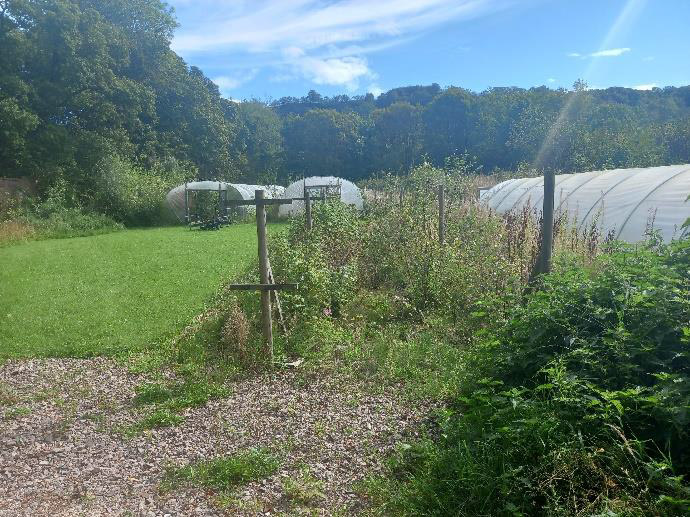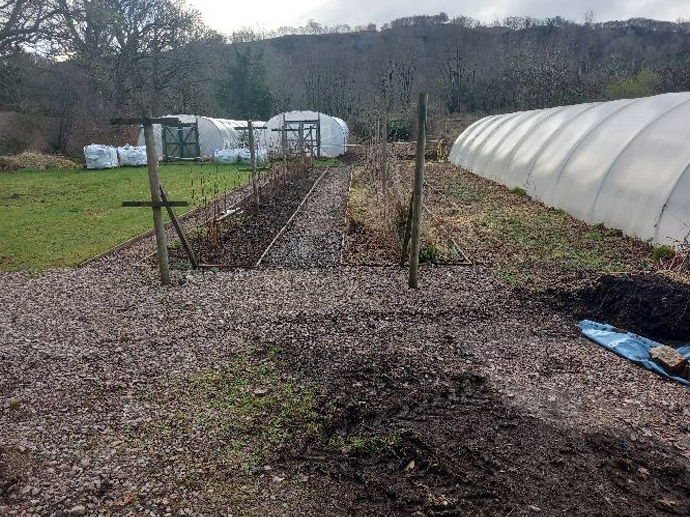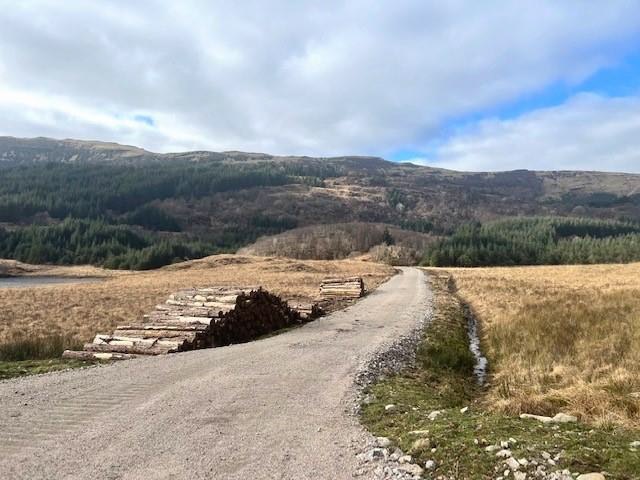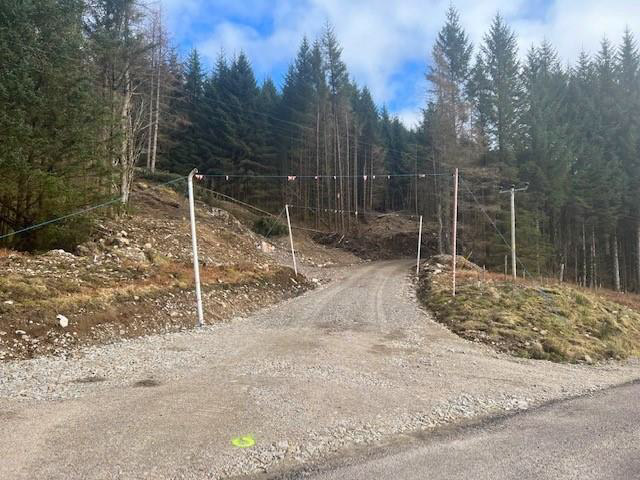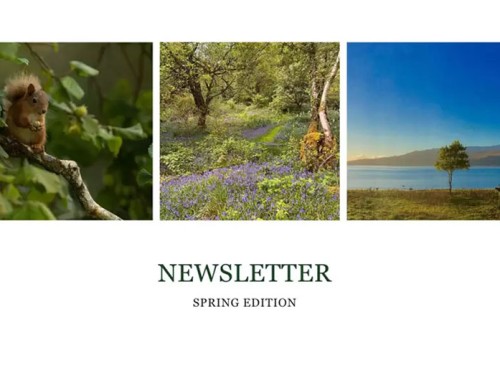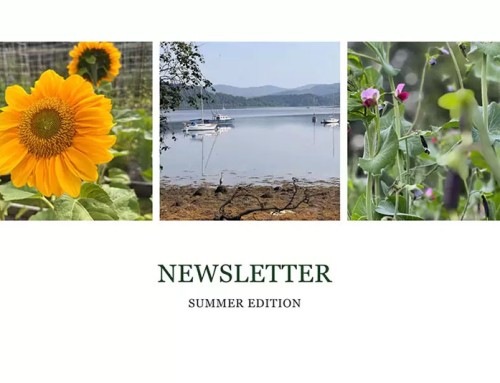
Welcome to the Ardtornish Newsletter
We hope we’ll be seeing you this year, and thought you might be interested in some of our news.
In the last year we’ve been delighted to welcome Dennis and John in the gardens and their respective families, and Darren Charlton in the estate maintenance team. Among the highlights of our long winter for me was the events we’ve hosted in Ardtornish House – our biennial Burns Supper for sixty locals, and ninety dining and overnighting to help us, the RSPB and many others celebrate Scotland’s amazing rainforests – of which we have some of the best here at Ardtornish. Our visitor and housekeeping team really do know how to throw a party.
We’ve been busy, as you’ll see below with our updates on accommodation, our farming and energy operations, woodlands and the two gardens. Team Ardtornish has achieved a huge amount this winter. Here’s their story.
Spring News from the Tourism Department
Kat Mclaughlin
It never ceases to amaze me just how much we achieve during the winter season. Although our team has shrunk a little in size, I’m pleased to say that this has not deterred us. If anything, we have been busier than ever!
Guests staying in the South Wing, the principal apartment in Ardtornish House, will benefit from the long-overdue kitchen upgrade. The space has been transformed, a stylish design with all the mod cons of a contemporary kitchen.

Our guests told us that the mattress in the four-poster bedroom was uncomfortable so we replaced it with a new pocket-sprung version.
Both Craigendarroch cottages have benefited from our ongoing investment programme. We are lifting the lid and replacing the entire roof and complementing it with new conservation roof lights. The upstairs of both cottages will be fully insulated and refurbished and the sitting room of Craigendarroch 1 given a face-lift.
We have also renovated the Yacht Flat – a former one-bedroom staff apartment in the heart of the estate, directly above the former Coach House that’s now used as the joiner’s workshop. The reconfigured space has two bedrooms, open-plan living space with kitchen diner and a generous-sized bathroom. With heating from one of our biomass plants, it will primarily serve as overnight accommodation for the company directors, consultants and other business guests.
We have upgraded the sewerage for Castle Cottages with a new sewage-treatment unit.
The Boat House exterior is getting attention – the steps down from the road and the paved area directly outside the front door are being re-laid with Caithness stone and the driveway will be top dressed with decorative stone chips. The patio doors overlooking the loch are also being replaced.
Guests staying in both the Boat House and Keepers Cottage will benefit from lightning download speeds thanks to the satellite Starlink system.
Staggering our holiday-let property arrival days means we can operate the department efficiently with a smaller team. We are looking to recruit two housekeepers for the coming season.
We are all very much looking forward to welcoming both new and returning faces when you are back this year.
A Gardeners World
Dennis Footman
Since starting work at Ardtornish in May of last year it hasn’t mattered what the weather throws at you, it has been one of the most enjoyable experiences of my horticultural career. And talking of the weather, come wind, rain, sun and snow the garden always looks stunningly beautiful….

It is a tad on the woolly side, so my first line of attack has been removal of the vast quantity of Cotoneaster, tree saplings, Skunk Cabbage and those troublesome Brambles that have been suffocating certain areas of the garden. All these will be ongoing projects, remaining in the diary for many months to come. The Brambles in particular have been putting up the biggest fight and on many occasions have fought back. Thankfully the noise of the brush cutter has drowned out any swearing that may or may not have happened.
As these unwanted features of the garden are pushed back and removed, we are beginning to uncover some hidden gems. Some of the little (and not so little) treasures have been hidden under the brambles for some time, including Primula denticulata (Drumstick Primrose), Rhododendron falconeri (The falconer Rhododendron), Erythronium dens-canis (Dogs-tooth Violet) to name but a few. As well as plants, we have also uncovered paths, burns and a pond.
Hidden under a mass of Brambles, Skunk cabbage, weeds and completely silted up but for a burn that runs through is an old pond in the lower lawn. We have cleared the mass of vegetation in preparation for it being dug out. With some mature tree specimens encircling the pond including Betula pendula ‘Youngii’ (Youngs weeping Birch), Taxodium distichum (Swamp Cypress), Metasequoia glyptostroboides (Dawn redwood) and Salix caprea (Goat willow), once the digging has finished the area will soon regain its old self and add new life to that part of the garden.
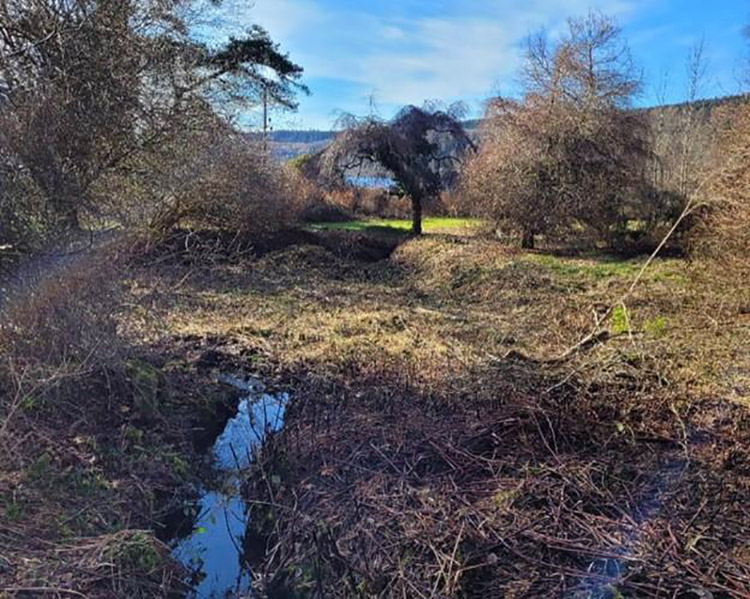
There will be further updates to this exciting project as things unfold.
Ardtornish Farm Progresses Towards a Regenerative Model
Dennis Overton
Farming has played an important part of life at Ardtornish back into the mists of time. Many larger farming businesses in the West Highlands have contracted or shut down altogether in recent decades. Ardtornish has remained committed to farming, a commitment recently renewed by the estate company. But the farming system will need to change in response to changing circumstances.
We now know that UK farming in 2020 accounted for over 45% of methane and 65% of nitrous oxide emissions. So we shall phase out the use of bagged fertilizer and make much more use of nitrogen-fixing plants, such as clover, in the inbye fields. Our cattle herd will be smaller, both in number and size of animals as a native breed replaces our continental crosses. Smaller cows produce less methane and require less bough-in winter ration. New hi-tech Nofence collars now allow the cows to become engines of regeneration of biodiversity, and a practical means of grazing hill ground that has not seen cattle for over a century. With fewer deer and sheep and controlled cattle grazing we hope to see areas of hill ground become much more diverse in both plants and insects.
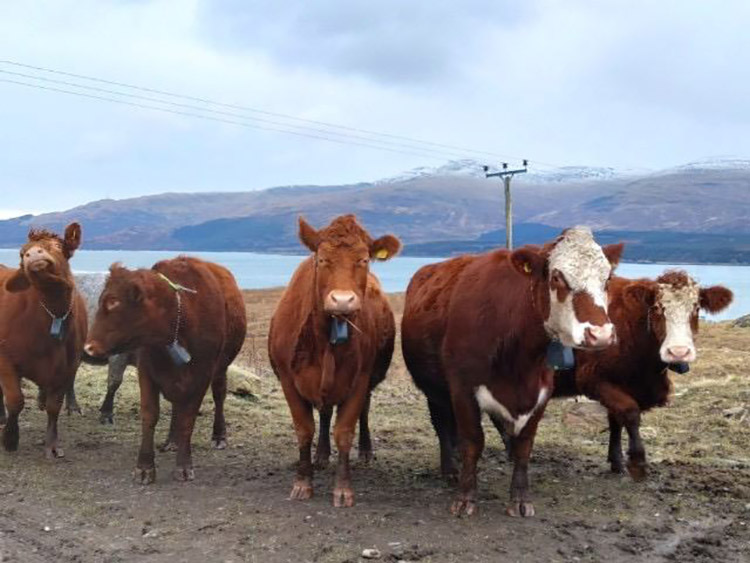
The proportion of Ardtornish being farmed is reducing to make way for new native woodlands. Some of these will provide cattle shelter, so allowing agroforestry to become more part of the Ardtornish system. The new woodlands have an important role in sequestering carbon. Sheep numbers having been falling, with much more of a focus on producing fewer, better conformed cross lambs, mainly on the lower ground, though the Glais Bheinn hill grazing’s above Old Ardtornish will continue to be important Blackface territory.
As in all businesses, data collection by digital means creates opportunities for better-informed decisions. We shall increase recording, helping develop techniques such as paddock grazing of the fields to increase sward quality and quantity. Each of these approaches helps the farm become more regenerative – operating in an increasingly circular way, requiring fewer external inputs, all of which have shot up in price since Russia invaded Ukraine.
Local demand for Ardtornish beef and lamb is rising, led by many self-catering visitors ordering our products to cook during their stay. Mull Slaughterhouse continues to be a vital partner in allowing this local trade to develop.
Major change like this requires a high degree of flexibility of outlook from the farming team. Messrs Laurie, Nudds and Shanks have risen to the challenge. Thanks goes to Robert Ramsay, one of SAC’s key specialists, for his guidance and ongoing support for change.
Kitchen Garden Revival
John Turner
Welcome to the first update on the Kitchen Garden. A lot has happened since I arrived in September.
I was able to get Garlic, Onions, Shallots and Broad Beans in before winter, and I’ve started sowing again since Mid-March. The Fruit tunnel was pruned in January and building the new framework in the coming weeks. I’ve also been working on the Raspberries, which were severely overgrown with weeds and saplings – an ongoing project in between the sowings through Spring.
Strawberries and Rhubarb have been ordered which will begin producing properly next year. The seed Potatoes have arrived (First Earlies are chitting ready to be planted), with Second Earlies, Maincrop and Salad Potatoes to follow.
There have been lots of smaller maintenance jobs going on, clearing land, stock inventory, running repairs and purchasing new tools to improve efficiency. The Old Gardeners’ Shed is slowly being transformed into a working base once again – the main base of operations for the Kitchen Garden and Wwoofers alike.
I have purchased two products which should aid in several ways – ‘Pete’s Peat-Free Compost’ which is a Vermicompost with a Low Carbon footprint, is sustainable and nutrient-dense, for propagation; and ‘Strulch’, an Organic mulch made of Wheat straw embedded with minerals. This will reduce the need for manual weeding significantly, and the embedded minerals help deter slugs and snails.
The raspberry beds took quite a long time to bring back to where they should be as you’ll appreciate from the pictures below.
A new irrigation system is currently being finished, with new mains water to the tunnels without their own supply, combined with new drip hoses and timers to reduce labour input and improve productivity. Two tunnels are due to be re-skinned later in the Spring when temperatures are somewhat milder to help tension the fabric. Then the others will be put into a cycle of being replaced one per year.
Thanks to the donation of bulbs from Sarah Raven I have been able to put some in the ground for cut flowers and I have potted up some Narcissi (that were for forcing) to be put into Holiday Cottages. There were two varieties and I have staggered their planting to enable an extended flowering period.
The latest purchase has been a Propagator to provide a constant environment to help with the germination of certain fruits and vegetables – enabling a longer harvest season to produce for longer.
All in all, there has been a large amount of work carried out, and we will be having a horticultural student placing with us potentially for six months, helping further restoration, with the potential for Wwoofers also to come and help out.
It’s All About Energy
Chris Cowsill
It has been a productive start to the year in the Energy department, with a healthy amount of rain to keep the hydro systems turning, to the recent dry period which has helped us progress with building and overhaul projects.
Achranich biomass shed
 The Achranich biomass shed is really starting to come together, with the recent additions of ten larch-clad sliding doors, a new chimney stack for the backup oil boiler and a replacement larch-clad door for the boiler-house and woodchip hopper. We are starting to see the beginnings of a very impressive-looking building and soon will have a completed shed for the growing biomass business.
The Achranich biomass shed is really starting to come together, with the recent additions of ten larch-clad sliding doors, a new chimney stack for the backup oil boiler and a replacement larch-clad door for the boiler-house and woodchip hopper. We are starting to see the beginnings of a very impressive-looking building and soon will have a completed shed for the growing biomass business.
Rannoch Intake Screen & Trash Rack Cleaner Project
We have also recently reached an important milestone: after sitting in disrepair for several years, the trash rack cleaner for the Rannoch intake screen is now fully functional. With a complete overhaul of all components and upgrades to the control systems it will clear the screen and let the turbine run more efficiently.
 Unfortunately, being unable to clean the trash rack adequately has increased the rate of corrosion and force on the intake screen, causing some damage. A stronger design that will help integrate the overhauled trash rack cleaner and prevent future screen damage has now been approved – to be fabricated and installed to coincide with major maintenance of the Rannoch turbine this Spring/Summer.
Unfortunately, being unable to clean the trash rack adequately has increased the rate of corrosion and force on the intake screen, causing some damage. A stronger design that will help integrate the overhauled trash rack cleaner and prevent future screen damage has now been approved – to be fabricated and installed to coincide with major maintenance of the Rannoch turbine this Spring/Summer.
Partnering with the Andrew Raven Ardtornish Woodland Settlement (ARAWS)
Dennis Overton & Amanda Raven
This Settlement was established by Andrew Raven shortly before his death in 2005 for the plantation forestry (independently owned by him at the time) within the Ardtornish boundaries. Income from the timber is used to support and maintain the woodlands and the wider estate business.
In the decades following the establishment of ARAWS much has changed in woodland management. Ardtornish and the Andrew Raven Trust hosted a weekend on What Makes a Good Wood? – Woods and Woodlands in Morvern in 21st Century, the report from which you can read here: http://andrewraventrust.org/annual_weekend/report/what_makes_a_good_wood
A working group of the Settlement and estate business has developed a coherent long-term plan for the Ardtornish woodlands, with estate company directors Andrew Hamilton and Dennis Overton regularly meeting ARAWS trustees Amanda Raven and Angus Robertson.
Our trees contribute in many ways – as a source of commercial timber, as habitat for biodiversity recovery, as carbon sinks for climate change mitigation, as providers of shelter for the Ardtornish cattle and as exemplars of treescapes once much more common in the West Highlands, the Atlantic rainforest.
Since 2021 ARAWS has been harvesting timber. Though volatile, underlying demand for Scottish commercial timber will continue to grow, particularly as an alternative to bricks and concrete in house building. The felling of the Be’ach plantation, at the top
of the White Glen, during 2021-22 will have been evident to all travelling in and out of Morvern from the north. This year harvesting activity turns to the Doire na Mairt plantation west of Loch Arienas.
There the limitations of the Rahoy public road are such that a new link road has been built to connect to the Forestry and Land Scotland’s Fuinary Forest extraction roads to allow this timber a route to market.

